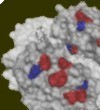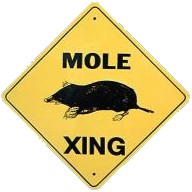

|
Overview
I. Molecular Phylogeny of the Family Talpidae Without robust hypotheses of evolutionary relationships among individual species within a lineage (a "family tree"), there is currently no meaningful basis upon which to separate the differential effects of inheritance versus selection-driven evolution. Earlier studies I conducted in collaboration with A. Shinohara (University of Miyazaki, Japan) and H. Suzuki (Hokkaido University, Japan) primarily employed mitochondrial DNA sequences and suggested that morphological specializations for both semi-aquatic and fossorial habits arose independently twice during the evolution of this group. Follow up studies incorporating multiple nuclear genes support these conclusions, though deep familial relationships remain difficult to resolve due to rapid and ancient divergence events. To address this shortcoming, we are currently employing next generation sequencing techniques to collect robust data sets (ultraconserved elements and additional single copy nuclear genes). Once in place, a detailed consensus talpid phylogeny should provide a necessary foundation for testing hypotheses pertaining to the evolution and conservation of adaptive mechanistic and molecular level specializations within this family from a historical, comparative standpoint. II. Evolution of Adaptive Hemoglobin Characteristics Accompanying Life History Transitions In conjunction with our phylogenetic studies on talpid moles we have been examining, in collaboration with Roy E. Weber (Aarhus University, Denmark), the functional and "mole"cular evolution of hemoglobin oxygen-affinity within members of this phenotypically diverse group (which is composed of terrestrial high-alpine, semi-aquatic, semi-fossorial, and fully subterranean forms). This ongoing work has overturned previous assumptions regarding the evolution and mechanisms underlying the high-affinity hemoglobin phenotype of subterranean lineages, and is revealing the evolutionary timing and molecular pathways by which the other talpid lineages have optimized oxygen uptake and delivery. Additional work is focusing on the evolution and modulation of hemoglobin function in the two fully aquatic mammalian lineages: sea cows (Sirenia) and cetaceans (whales and dolphins). III. Resurrection, Mechanism, and Adaptive Physiochemical Evolution of Hemoglobins from Extinct Avian and Mammalian Species Presumably to reduce heat loss from the extemities while maintaining sufficient tissue oxygenation, the hemoglobins of cold-tolerant mammals (e.g. muskox, reindeer) tend to display low thermal sensitivities. While the acquisition genetic modifications that lower the effect of temperature on hemoglobin-oxygen affinity is thought to have played a major role in the adaptation of Arctic species to cold climates, the precise molecular mechanisms by which amino acid substitutions cause these effects, and their mode of evolution, are still largely unresolved. The elucidation of such evolutionary trends has been made more problematic by mass extinction events over the past 40,000 years that left behind only a fraction of large, northerly-distributed mammals for study. However, advances in ancient DNA sequencing together with molecular biology techniques that allow for the recombinant expression of proteins in E. coli now permit the 'resurrection' and functional physiochemical characteristics of authentic hemoglobins from extinct species. These pioneering studies have revealed unexpected insights into the molecular mechanisms underlying cold adaptation in hemoglobin function in woolly mammoths and Steller's sea cows that revise our understanding of the thermal dependence of oxygen binding to vertebrate Hbs. Ongoing research is testing for convergent thermal adaptations in the hemoglobin proteins of the woolly rhinoceros and Great Auk. IV. Elucidating Convergent Evolutionary Patterns in Hemoglobin and Myoglobin
Function in Birds and Mammals Hemoglobin and myoglobin are among the most studied proteins in science, yet relatively little attention has been directed towards identifying convergent patterns in protein function that, for example, extend dive times in aquatic birds and mammals or increase the oxygen transport capabilities of the tiniest endotherms (e.g. shrews, hummingbirds) -- whose mass-specific oxygen rates, and hence tissue oxygen requirements, exceed those of their larger relatives by orders of magnitude. To address this shortcoming, we are conducting comprehensive surveys of the mammalian and avian lineages in collaboration with Michael Berenbrink (Liverpool, UK), to identify and characterize adaptive signatures of protein evolution. V. Gene Inactivation In addition to the above studies, our lab is interested in the phenotypic effects and historical contingencies arsing from inactivations of genes coding for proteins involved in thermogenesis, vision, and other sensory modalities in select mammalian lineages, and their associations with evolutionary transitions apparent in the fossil record. |
 My recent research combines phylogenomic and physiological approaches to shed
light on the environmental and evolutionary physiology of mammalian species
ranging from shrews and moles to mammoths and whales. This research is presently
centered on several (interrelated) areas:
My recent research combines phylogenomic and physiological approaches to shed
light on the environmental and evolutionary physiology of mammalian species
ranging from shrews and moles to mammoths and whales. This research is presently
centered on several (interrelated) areas: